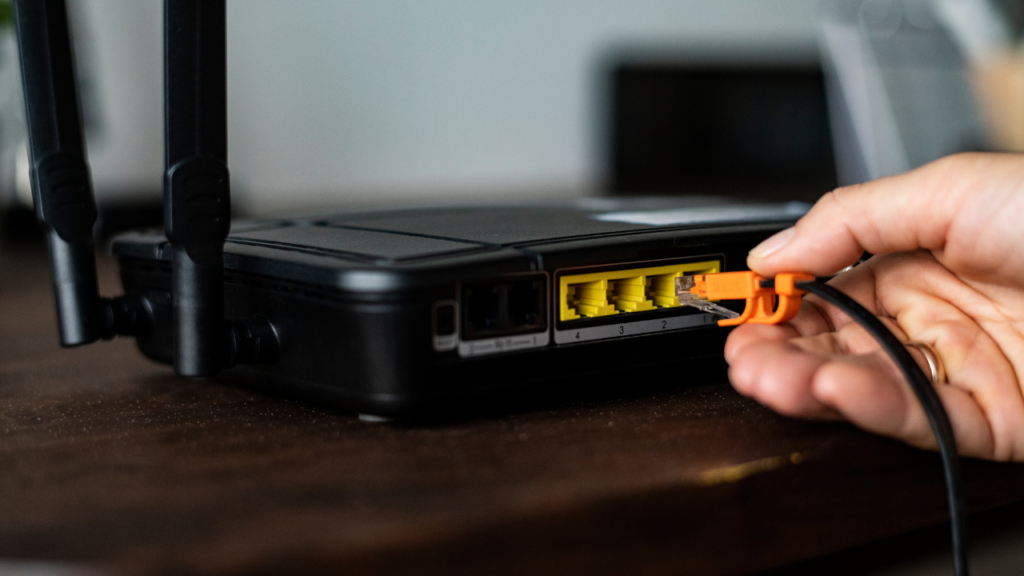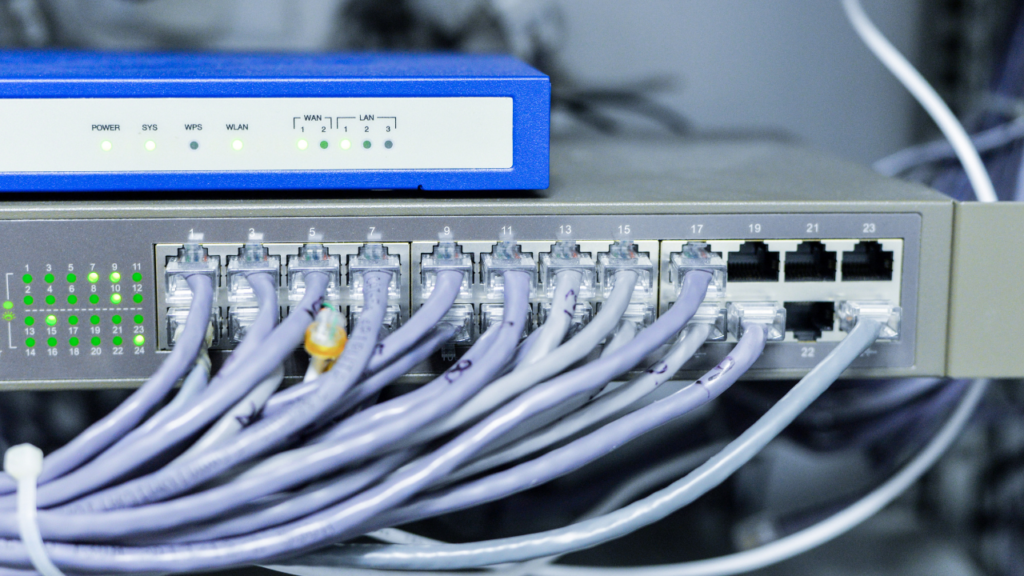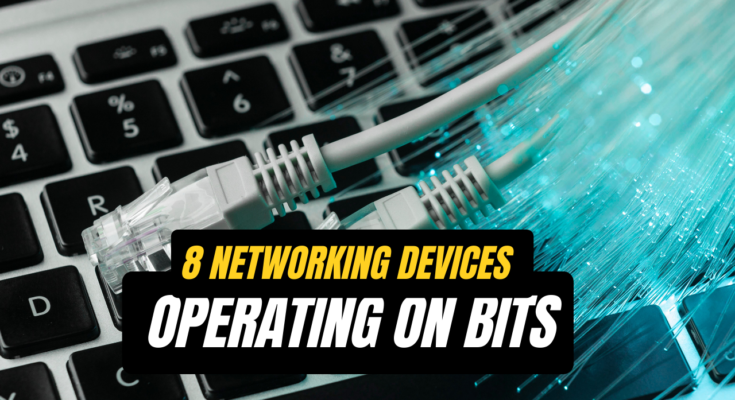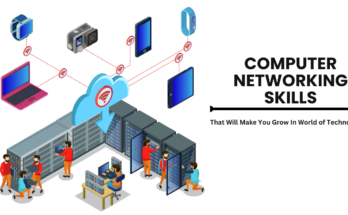8 Networking Devices Operating on Bits
Introduction:
In the intricate landscape of modern connectivity, networking devices serve as the backbone of seamless data transmission. These devices, meticulously designed to handle vast amounts of information, operate at a fundamental level: bits. In this piece, we’ll go into the realm of networking devices and examine how they effectively handle and transfer data using bits as a binary language.
Bits:
Bits, the smallest units of data, serve as the building blocks that underpin the seamless transmission of information across networks. Many networking devices, such as switches and routers, are remarkably skilled at manipulating these bits in order to create a harmonious symphony that facilitates the effective and seamless transfer of data throughout the vast network of interconnected systems. As virtuoso interpreters of the binary code, these devices are essential to the precise and dependable execution of the complicated dance of digital communication within the networking industry.
Networking Devices:
1. Routers:
Routers stand as the linchpin in the intricate web of digital communication, orchestrating the flow of data packets between diverse networks. Their role is pivotal, operating on the smallest units of data – bits. As binary signals traverse through routers, intelligent decisions are made to ensure the swift and efficient delivery of data to its intended destination.

- A wireless router generates a wireless signal for computers to connect to within a specific range, providing up to 300 feet of range when connected indoors.
- A brouter: is a hybrid router and bridge that works like a bridge, enabling data transmission between networks and routing data within a network to individual systems.
- core router: is the backbone of networks, connecting all networking devices and providing numerous fast and powerful data communication interfaces.
- An edge router: is a low-capacity network device placed at the edge of a network, allowing internal networks to interact with external networks using an external border gateway protocol (BGP).
- A broadband router: is commonly used for high-speed internet access, used for connecting phones to the internet and using VoIP technology. It has three to four ethernet ports used to connect desktops and laptops.
2. Switches:
Switches become skilled managers inside local networks, maximizing data flow between linked devices by speaking the language of bits. They precisely identify the best route for data packets to take, reducing congestion and enhancing network performance as a whole.
3. Hubs:
While less prominent in contemporary networks, hubs remain fundamental connectors at the most basic level. Broadcasting data indiscriminately to all connected devices, hubs transmit bits with simplicity, serving as essential yet straightforward elements in network setups.
4. Modems:
Modems are essential components at the internet gateway because they can modulate and demodulate analogue and digital signals. They do this by breaking down the data into bits, which allows for easy transfer throughout the huge digital space.
5. Gateways:
Operating as digital intermediaries, gateways seamlessly translate data formats between different networks. Their manipulation of bits facilitates communication among disparate systems, fostering interoperability in the diverse landscape of digital connections.
6. Firewalls:
As digital gatekeepers, firewalls meticulously inspect the bits of incoming and outgoing data. They shield networks from unwanted access and possible risks that could jeopardise the system’s integrity by closely examining binary code.
7. Load Balancers:
Load balancers act as virtuoso managers in networks struggling with high traffic, dividing data equitably among several servers. These devices maximize resource utilization by skillfully controlling the bit flow, which improves the network’s overall performance and efficiency.
8. Network Adapters:
Network adapters, which are found in computers and other devices, serve as translators to facilitate smooth network connection. These adapters, operating at the intersection of digital devices and network environments, transform data into bits, ensuring a harmonious interaction within the broader digital landscape.

From Bits to Benefits: The Impact of Networking Devices
Despite their modest appearance, networking devices have a significant impact on many aspects of modern life. An era of seamless connection, information access, and even remote work and education has been brought about by these technologies. In this investigation, we go into the specifics of how networking devices—which speak a language of bits—have radically changed our way of life.
Instant Communication:
Our interactions have changed as a result of networking devices, which have weaved an instantaneous global communication tapestry. Sending emails, having instant conversations with pals on other countries, or taking part in virtual meetings—the unbroken flow of bits guarantees that the world is connected.
Global Access to Information:
We now have unheard-of access to information thanks to the internet’s effective bit routing. By enabling us to explore virtual libraries, stream films from around the world, and do research on a variety of subjects, networking devices have democratized knowledge and put it at our fingertips.
Remote Work and Education:
Reliable data transmission via networks enables the flexibility and reach of remote business and education. In order to facilitate remote cooperation, facilitate online learning, and link coworkers, networking devices are essential to the development of the contemporary workforce and educational environment.
E-commerce and Digital Transactions:
Networking devices have facilitated the rise of e-commerce, transforming the way we shop and conduct financial transactions. The secure exchange of bits over networks ensures that online purchases, financial transactions, and digital interactions occur seamlessly, driving the evolution of the digital economy.
Smart Homes and IoT:
In the realm of smart homes and the Internet of Things (IoT), networking devices orchestrate connectivity within domestic spaces. From smart thermostats to interconnected appliances, these devices enable the seamless exchange of bits, creating intelligent and responsive living environments.
Collaboration Platforms:
Networking devices have paved the way for global teamwork through digital collaboration platforms. Whether working on shared documents, conducting virtual meetings, or collaborating in real-time, these devices ensure the smooth exchange of bits, fostering collaboration on a global scale.
Social Media Connectivity:
The rise of social media is intricately tied to the capabilities of networking devices. These platforms facilitate the creation of digital communities, allowing individuals to connect, share, and engage with each other through the seamless transmission of bits.

The Future of Bits: A Symphony Evolving
With new technologies like fiber optic cables and wireless mesh networks offering even quicker and more efficient data transfer, the world of networking equipment is continuously changing. In order to maintain the perfect harmony of the digital symphony, networking equipment will remain essential as the demand for information and communication increases.
The next time you message, stream, or just interact with someone online, keep in mind the unsung heroes operating the networking gear and adjusting little details to make sure your digital experience is smooth and rewarding.
Conclusion:
In the realm of networking devices, Bits, underpin digital communication, are the common language among networking devices. Gaining insight into the complex world of contemporary connectivity can be achieved by learning how routers, switches, modems, and other devices function on bits. The effective manipulation of bits will continue to be at the forefront of technological development, influencing networking and digital communication in the future.
FAQs: Networking Devices Operating on Bits
1. What are networking devices operating on bits?
Networking devices operating on bits include routers, switches, hubs, NICs, and more, facilitating data transfer in binary form.
2. How do these devices process information in bits?
Networking devices process information by converting data into binary bits (0s and 1s), allowing for efficient communication across networks.
3. What role do bits play in networking efficiency?
Bits are the fundamental units of data in networking, influencing the speed and accuracy of data transmission, ensuring efficient communication.
4. How does the collaboration of networking devices optimize performance?
Networking devices collaborate by processing and transmitting bits, collectively enhancing network performance and ensuring seamless data exchange.
5. Can networking devices handle different types of bits?
Yes, networking devices are designed to handle various types of bits, accommodating different data types and formats for comprehensive network functionality.
6. What is the significance of understanding networking devices and bits?
Understanding how networking devices operate on bits is crucial for maintaining and optimizing network performance, ensuring reliable data transfer.
7. Are there advancements in networking technology affecting bits processing?
Yes, advancements in networking technology continually impact how devices process bits, leading to improved speed, security, and overall network efficiency.



